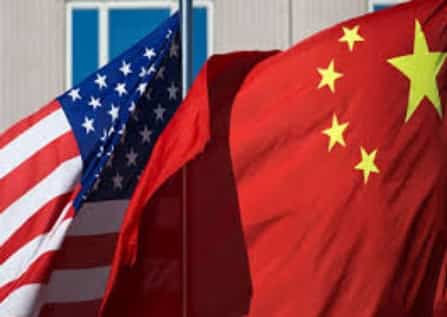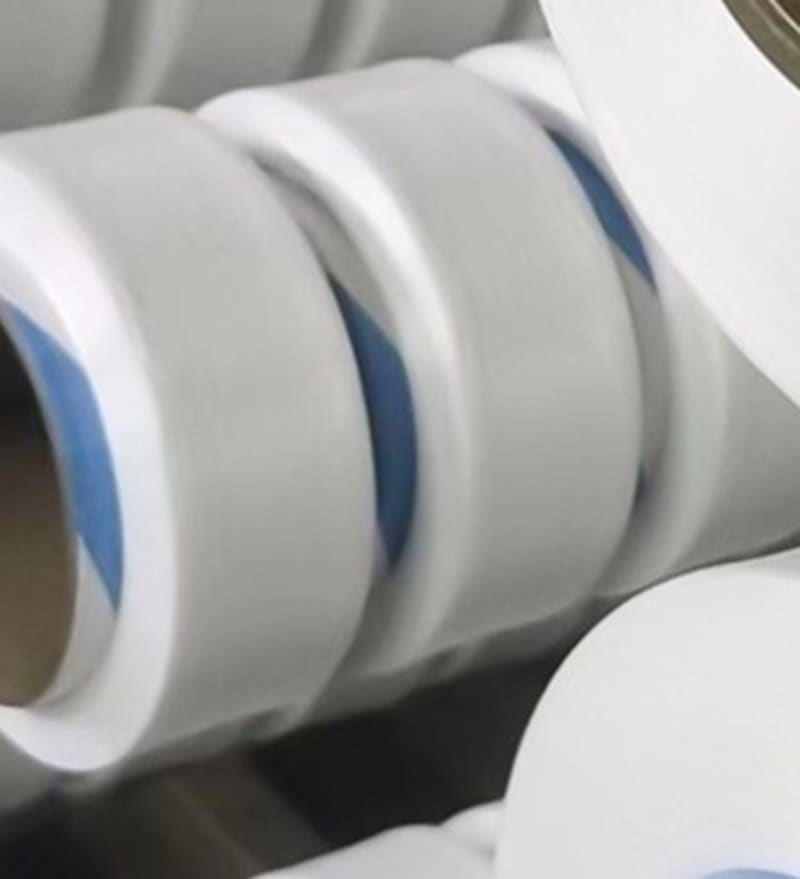Biomass – Why China Tariffs Could Reshape the Global Economy 06-09-2024
Biomass
Crude Oil Prices Trend

Crude Oil Prices Trend by Polyestertime
Why China Tariffs Could Reshape the Global Economy
Tariffs, especially between the U.S. and China, have become a central issue in global economic policy. Initially embraced by Trump, they have now gained traction within both major U.S. political parties. President Biden has not only maintained the tariffs but has also raised them on Chinese products, signaling a long-term strategy that’s likely to persist regardless of future administrations. Given this reality, it’s important to consider how these tariffs might reshape the global economy, U.S.-China trade relations, and potential investment strategies. Biomass
Tariffs and U.S.-China Trade Relations
The Biden administration plans further tax increases on Chinese goods, including electric vehicles, semiconductors, and critical minerals. These measures follow delays in reviewing tariffs originally imposed under Trump. In response, China has repeatedly urged the U.S. to remove all tariffs, arguing they harm not just China but the global economy as a whole.
The Complex Effects of Tariffs
While tariffs aim to make imports more expensive, encouraging consumers to buy domestic products, the reality is more nuanced for three key reasons:
- Currency Depreciation: When the U.S. imposes tariffs, China’s currency often depreciates. For example, after Trump’s tariffs, the Chinese yuan weakened, offsetting some of the anticipated effects. This depreciation makes Chinese exports cheaper, diminishing the impact of the tariffs. Biomass
- Corporate Evasion: Many Chinese firms have found ways to bypass tariffs by moving production to countries like Vietnam or Mexico. These products are then rebranded or assembled elsewhere, making it difficult to restrict Chinese imports effectively.
- Impact on U.S. Manufacturers: Tariffs can raise costs for U.S. companies that rely on Chinese materials. For example, steel and aluminum tariffs increase expenses for U.S. automakers and appliance manufacturers, undermining their global competitiveness. Biomass
Can Tariffs Prompt Economic Reform in China?
China’s economic strategy is heavily dependent on overproduction and exports, leading to a glut of low-cost goods on the global market. This model has contributed to significant debt and unsold inventory within China, while also suppressing wages and domestic consumption. Tariffs could push China to rethink this unsustainable approach, much like Japan did in the late 20th century. By making it harder to flood global markets, tariffs might encourage China to focus on domestic growth and more balanced economic policies.
Global Manufacturing Shifts and Investment Opportunities
One unintended but positive consequence of tariffs is the potential for economic growth in other regions. Biomass
To avoid U.S. tariffs, Chinese companies have shifted production to countries like Vietnam, Indonesia, and Mexico, spurring economic development there. Investors might see opportunities in these emerging markets, where manufacturing capacity and infrastructure are improving due to this relocation.
A New Era of Globalization?
Tariffs could be the catalyst for a more balanced global economy. As China diversifies its production, countries like Mexico and Morocco are poised to become new manufacturing hubs. Biomass
Investors who position themselves in these regions could benefit from the next phase of globalization, where production is more evenly distributed across the world.
In summary, while tariffs are often seen as blunt economic tools, they could play a crucial role in reshaping global trade and investment landscapes.

The HolyGrail 2.0 Initiative has validated the use of digital watermarking combined with Near-Infrared (NIR) technology for advanced sorting of flexible packaging
This technology, provided by Digimarc and Pellenc ST, was tested in an industrial setting at Hündgen Entsorgung’s material recovery facility. The trials, conducted from December 2023 to February 2024, focused on separating hygiene-grade LDPE films from food-grade PP films.
Results from the December 2023 trials showed detection efficiencies over 95%, sorting efficiencies above 85%, and purity levels exceeding 70% in single-pass sorting. These figures are expected to improve with two-pass sorting, commonly used in recycling facilities. In February 2024, despite harsher conditions, including mixed waste streams and higher throughput, the technology maintained high detection (89.9%) and sorting (75.1%) efficiencies, with purity at 88.1%. Biomass
The results demonstrated the technology’s potential to create high-quality recycling streams, surpassing current capabilities. The consistent performance across varied conditions suggests that the technology is ready for industrial application, potentially reaching Technology Readiness Level (TRL) 9.
A subsequent three-month trial will focus on sorting digitally watermarked rigid packaging in Denmark and Germany.
If successful, this will further validate the system’s robustness in an operational environment, paving the way for large-scale industrial adoption. Biomass

Audi begins mass production of radiator grilles with recycled content
For the first time, Audi is mass-producing painted radiator grilles made from a blend of polycarbonate (PC) and polyethylene terephthalate (PET) recyclates for the new Audi A3 Sportback and Audi A3 Sedan. This groundbreaking achievement is the result of a collaboration between Mocom, a specialist in compounding and recycling, Winning Plastics, a leading plastics processor, and Audi.
“Our objective is to systematically increase the use of recycled materials in Audi vehicles. With the A3 model update, the painted radiator grille ontains a significant portion of secondary raw materials for the first time. Biomass
As a key design element of Audi models, the grille must meet high standards in design, appearance, and quality, in addition to specific mechanical requirements,” explains Frank Fischer from Audi’s Materials Engineering department.
The project team encountered challenges due to the stringent technical requirements for mechanical properties in safety-critical components and the high purity needed for the material to be reused in painted parts. “Developing and producing radiator grilles with recycled content was an exciting process”, says Werner Meschitz, Head of Innovations at Winning Plastics. “Suitable recyclates were not available off-the-shelf, so together with our partner Mocom, we developed a recycled compound that partially incorporates painted scrap components from our own production. Biomass

What’s the weakness in spandex compared to polyester and nylon?
Since the beginning of the year, the trends of the main raw materials for synthetic fibers-polyester, nylon, and spandex-have shown significant discrepancies. The prices of polyester and nylon have experienced wide fluctuations influenced by supply and demand, seasonal changes, and cost variations. However, spandex market continues to experience severe competition, with prices consistently falling. Biomass
Since the beginning of the year, the price trends of polyester, nylon, and spandex have shown clear differences, though some similarities exist. All three materials have experienced price declines, with spandex prices decreasing more sharply than those of polyester and nylon (see above chart). The price declines for polyester, nylon, and spandex since the beginning of the year are approximately 1.8%, 5.0%, and 10.3%, respectively. Notably, the price performance has diverged among these materials; while polyester and nylon saw two phases of price spikes followed by corrections, spandex has shown a consistent downward trend.
Early in the year, polyester prices experienced a slight spike, and by late February and early March, prices were at a seasonal high. In March, due to downstream inventory digestion and insufficient new order follow-ups, the average monthly price of polyester saw a slight decline. From April to mid-May, polyester prices continued to soften; however, by late May, major polyester manufacturers began to limit production to maintain prices, leading to a noticeable increase in June’s average monthly price. Biomass
Meanwhile, nylon prices rebounded slightly in April and May due to demand from sun protection, sports, leisure, and outdoor sectors. However, despite a reduction in new orders for circular knitting machines and warp knitting in early June, strong cost support from rising benzene prices led to a slight increase in nylon prices.

Dow-Mitsui Polychemicals starts marketing of biomass EVA and biomass LDPE
Mitsui & Dow Polychemicals (Tokyo; President: Ryoji Kato) starts marketing biomass ethylene vinyl acetate copolymer (EVA) and biomass low density polyethylene (LDPE) based on the mass balance method from September 1, 2024. Biomass
Biomass EVA and biomass LDPE have the same resin properties as conventional petroleum-derived products because the raw material, biomass ethylene, exhibits the same physical properties as conventional petroleum-derived ethylene. Therefore, they can be easily switched from conventional products, while contributing to the reduction of GHG emissions over the entire product life cycle.
Since obtained ISCC PLUS certification at our Chiba Plant (Ichihara City, Chiba Prefecture) in May 2024, we have been preparing to start production and marketing of biomass EVA and biomass LDPE products. Biomass

Asahi Kasei to showcase material solutions for thermal management of EVs, recycling and 3D printing at Fakuma 2024
Japanese technology company Asahi Kasei will exhibit its broad range of diversified material solutions at Fakuma 2024, the world’s leading trade event for industrial plastics processing, from October 15-19 in Friedrichshafen, Germany. Highlights include polymer solutions for thermal management applications in EVs, a novel thermoplastic elastomer for improved recyclability of automotive interior parts, and a cellulose nanofiber composite for high-performance 3D printing. Biomass
Asahi Kasei will present its materials and solutions in three different areas: “Compact & Safe EV Batteries”, “Improved Connectivity & Lightweighting”, and “Sustainable Material Life Cycle”.
At the battery island, the company will showcase the modified polyphenylene ether (mPPE) XYRON™. Featuring a high non-halogenic flame retardance and the lowest ion elution properties, this material is suitable for thermal management applications in EV batteries. At Fakuma, Asahi Kasei will also show multilayer cooling pipes that do not require an adhesive layer. These pipes are made of a composite of the company’s LEONA™ PA on the outside, and XYRON™ on the inside. This pipe offers excellent bending properties, hydrolysis resistance and low ion elution properties Biomass

Biomass
